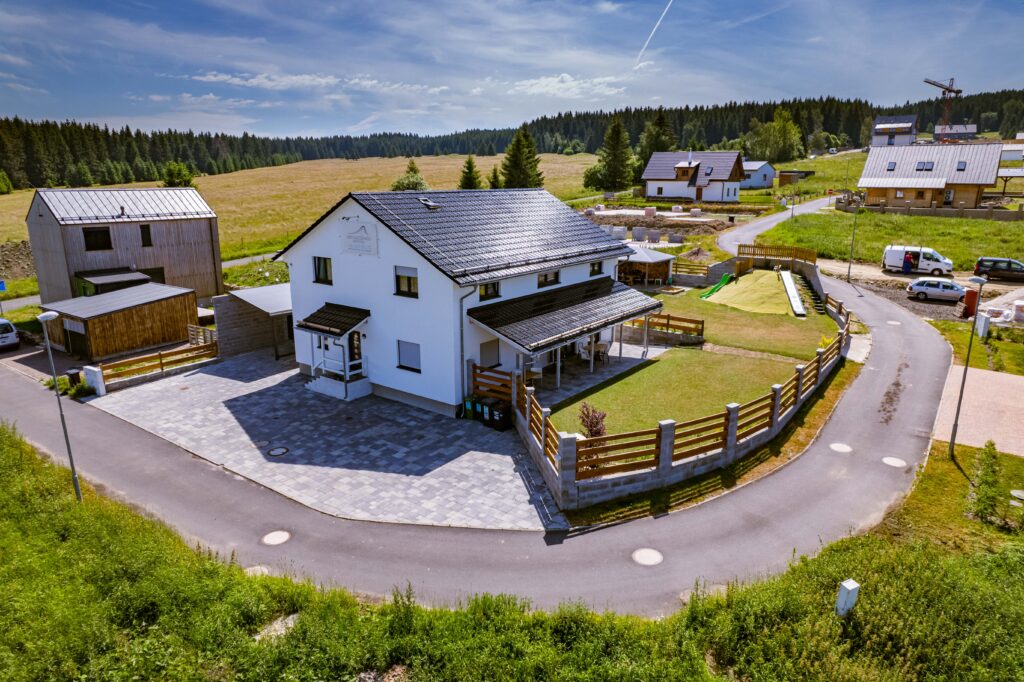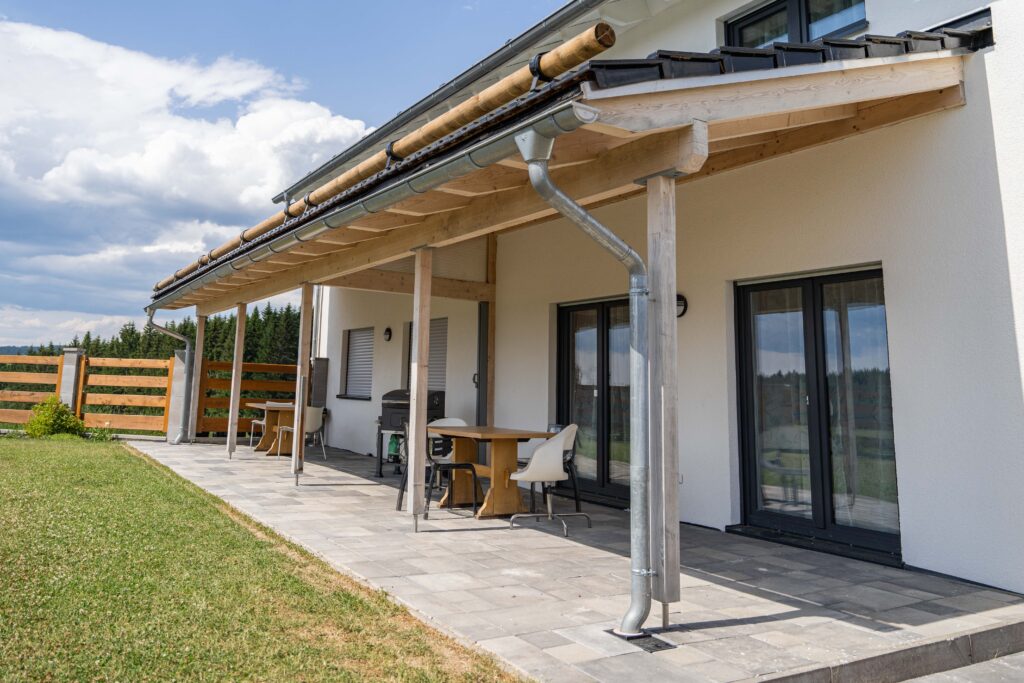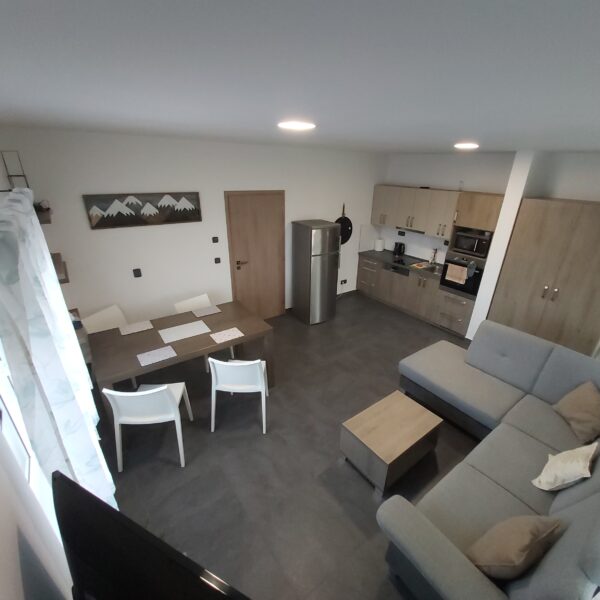Apartmány
Ubytujte se v komfortně vybavených apartmánech.
Vybavení apartmánů
Výlety, atrakce, zábava
O ubytování
Search engine optimization
What is search engine optimization?
Search engine optimization (SEO) is the art and science of getting pages to rank higher in search engines such as Google, Bing and Yahoo. Because search is one of the main ways in which people discover content online, ranking higher in search engines can lead to an increase in traffic to a website.
In Google and other search engines, the results page often features paid ads at the top of the page, followed by the regular results or what search marketers call the "organic search results". Traffic that comes via SEO is often referred to as "organic search traffic" to differentiate it from traffic that comes through paid search.
How is SEO different from paid search?
Paid search is often referred to as search engine marketing (SEM) or pay-per-click (PPC).
SEO vs. SEM
SEO vs. SEM
SEM stands for Search Engine Marketing, which is just another way of saying search marketing. It’s a broad term that includes both SEO and PPC, all aiming to drive traffic to your site through organic (unpaid) and paid efforts. In simple terms, search marketing is about getting visibility and traffic from search engines using both paid and unpaid strategies.
So, what’s the difference between SEO and SEM? Technically, SEM encompasses SEO.
- SEO: Focuses on driving organic traffic from search engines.
- SEM: Involves driving both organic and paid traffic from search engines.
Things can get a bit confusing because many people today use SEM interchangeably with PPC. This can make it seem like SEO is being left out, but that’s not the case. SEO is just as much a part of marketing as PPC is.
SEO vs. PPC
PPC, or Pay-Per-Click, is a type of digital marketing where advertisers bid on specific keywords they want their ads to show up for in search results. When someone searches for those keywords, the ads appear at the top of the results page and if clicked on the advertisers pay-per-click.
It's crucial not to frame it as "SEO vs. PPC" in terms of which one is better. They complement each other and work best when used together, budget permitting.
The history of SEO
SEO has evolved significantly since its inception in the early-1990s. It began with webmasters manually submitting URLs to search engines and including keyword-rich meta tags. Early search engines, like AltaVista and Infoseek, used these tags to index content. The late 1990s saw the rise of Google, which revolutionized SEO with its PageRank algorithm, focusing on the quality and quantity of backlinks. Over the years, SEO has become more sophisticated, incorporating user experience, mobile optimization, and content quality as key ranking factors.
Since then, there have been hundreds of algorithm changes, driving marketers to constantly adapt their strategies. The history of SEO demonstrates that a comprehensive digital marketing strategy is the best way to stay ahead. Creating content that genuinely benefits visitors but builds a sustainable and effective online presence.
The benefits of SEO
Search engine optimization is a key part of online marketing because search is one of the primary ways that users navigate the web.
Search results are presented in an ordered list, and the higher up on that list a site can get, the more traffic the site will tend to receive. For example, for a typical search query, the number one result will receive 40-60% of the total traffic for that query, with the number two and three results receiving significantly less traffic. Only 2-3% of searchers click beyond the first page of search results. Thus, even a small improvement in search engine rankings can result in a website receiving more traffic and potentially business.
Because of this, many businesses and website owners will try to manipulate the search results so that their site shows up higher on the search results page (SERP) than their competitors. This is where SEO comes in.
How SEO works
Search engines such as Google use an algorithm or set of rules to determine what pages to show for any given query. These algorithms have evolved to be extremely complex, and take into account hundreds or even thousands of different ranking factors to determine the rankings of their SERPs. However, there are three core metrics that search engines evaluate to determine the quality of a site and how it should rank:
-
Links
Links from other websites play a key role in determining the ranking of a site in Google and other search engines. The reason being, a link can be seen as a vote of quality from other websites, since website owners are unlikely to link to other sites that are of poor quality. Sites that acquire links from many other sites gain authority (called "PageRank" in Google) in the eyes of search engines, especially if the sites that are linking to them are themselves authoritative.
-
Content
In addition to looking at links, search engines also analyze the content of a webpage to determine if it would be relevant for any given search query. A large part of SEO is in creating content that is targeted towards the keywords that search engines' users are searching for.
-
Page structure
The third core component of SEO is page structure. Because webpages are written in HTML, how the HTML code is structured can impact a search engine’s ability to evaluate a page. Including relevant keywords in the title, URL, and headers of the page and making sure that a site is crawlable are actions that site owners can take to improve the SEO of their site.
The search engine optimization process involves optimizing each of these core components of search engine algorithms in order to rank higher in the search results.
Search engine optimization techniques
Understanding how search engines work is only the first step of the process in improving a site's search rankings. Actually improving a site's rank involves leveraging various SEO techniques to optimize the site for search:
-
Keyword research – Keyword research is often the starting point for SEO and involves looking at what keywords a site is already ranking for, what keywords competitors rank for, and what other keywords potential customers are searching for. Identifying the terms that searchers use in Google search and other search engines provide direction on what existing content can be optimized and what new content can be created.
-
Content marketing – Once potential keywords are identified, content marketing comes into play. This can be updating existing content or creating brand new pieces of content. Because Google and other search engines place a premium on high-quality content, it's important to research what content is already out there and create a compelling piece of content that provides a positive user experience and has a chance of ranking higher in the search engine results. Good content also has a greater chance of being shared on social media and attracting links.
-
Link building – Because links from external websites (called "backlinks" in SEO parlance) are one of the core ranking factors in Google and other major search engines, obtaining high-quality backlinks is one of the main levers that SEO has. This can involve promoting good content, reaching out to other websites and building relationships with webmasters, submitting websites to relevant web directories, and getting press to attract links from other websites.
-
On-page optimization – In addition to off-page factors such as links, improving the actual structure of the page can have tremendous benefits for SEO, and is a factor that is entirely in the control of the webmaster. Common on-page optimization techniques include optimizing the URL of the page to incorporate keywords, updating the title tag of the page to use relevant search terms, and using the alt attribute to describe images. Updating a page's meta tags (such as the meta description tag) can also be beneficial– these tags don't have a direct impact on search rankings, but can increase click-through rate from the SERPs.
-
Site architecture optimization – External links are not the only thing that matters for SEO, internal links (the links within one's own website) play a large role in SEO as well. Thus a search engine optimizer can improve a site's SEO by making sure key pages are being linked to and that relevant anchor text is being used in those links to help improve a page's relevance for specific terms. Creating an XML sitemap can also be a good way for larger pages to help search engines discover and crawl all of the site's pages.
-
Semantic markup – Another SEO strategy that SEO experts utilize is optimizing a website's semantic markup. Semantic markup (such as Schema.org) is used to describe the meaning behind the content on a page, such as helping to identify who the author of a piece of content is or the topic and type of content on a page. Using semantic markup can help with getting rich snippets displayed in the search results page, such as extra text, review stars and even images. Rich snippets in the SERPs doesn't have an impact on search rankings, but can improve CTR from search, resulting in an increase in organic traffic.
Top SEO tools
As a fairly technical discipline, there are many tools and software that SEO relies on to help with optimizing websites. Below are some commonly used free and paid tools:.
-
Google Ads Keyword Planner
Keyword Planner is another free tool provided by Google, as part of their Google Ads product. Even though it is designed for paid search, it can be a great tool to use for SEO since it provides keyword suggestions and keyword search volume, which can be helpful when doing keyword research.
-
Backlink analysis tools
There are a number of link analysis tools out there, the two primary ones being Ahrefs and Majestic. Backlink analysis tools allow users to analyze which websites are linking to their own website, or the websites of competitors, and can be used to find new links during link building.
-
SEO platforms
There are many different SEO platforms that bring together many of the tools that SEO needs to optimize sites. Some of the most popular include Siteimprove, Moz, BrightEdge, Searchmetrics and Linkdex. These platforms track keyword rankings, help with keyword research, identify on-page and off-page SEO opportunities, and many other tasks related to SEO.
-
Social media
Most social media sites don't have a direct impact on SEO, but they can be a good tool for networking with other webmasters and building relationships that can lead to link building and guest posting opportunities.
How long does it take to improve your SEO strategy?
See the results of your SEO efforts can take time, typically between 3-6 months, depending on factors such as industry competitiveness, the quality of SEO strategies implemented, also the website's current standing. Initial improvements might be visible within a few weeks, particularly with on-page optimizations and technical fixes, but substantial and sustained growth usually takes longer as search engines indexes change and as site authority builds. Patience and consistent effort are key to long-term SEO success. Follow the link jucify at our site
Optimizing search traffic: from clicks to conversions
Search engine optimization done properly can have the potential to dramatically increase the amount of traffic that a website receives, but all of that search traffic won’t help grow a business unless it converts into paying customers. This is where conversion rate optimization (CRO) comes in.
Conversion rate optimization involves using methods such as A/B testing to make changes to websites and measure the impact they have on a site’s conversion rate. Successful search marketers know that just getting traffic to a site is not enough, what the traffic does once it arrives on the site is just as important.
CRO was once a difficult and highly technical process, but thanks to software such as Optimizely, running tests to improve conversions on your site is as easy as inserting a single line of Javascript. Best of all, Optimizely’s Visual Editor allows you to make changes to a site without having to write a single line of code.
How to rent a car in Dubai
Some things are much easier with a car in Dubai, especially if you're travelling long distances. Here are a few tips on renting a vehicle, including supercars.
The basics of renting a car in Dubai
Make sure you have all the paperwork and permits you’ll need to rent a car in advance. Rules can change, so it's best to check just before you travel.
- International Driving Permit: People from all GCC countries can use the driving licence issued from their own country to drive in Dubai as a tourist. This is also the case for citizens of many other nations such as the UK, USA, Canada, Germany, South Korea, France and Japan. Visitors from other countries must have a valid International Driving Permit (IDP). The rules can change, so it's best to check directly with rental companies to see if your home country's licence will be accepted or if you need to obtain an IDP in advance.
- Age: You must be 21+ to rent a car in Dubai.
- Credit card: Most Dubai rental companies will require you to use a credit card as payment for the car rental, which will then be automatically used if fines or fees are incurred.
- Insurance: By law, all car rentals in Dubai include third-party cover by law. Some travel insurance policies may cover car rentals, but most rental companies will offer additional insurance for a fee, which can be high if you're deciding on the spot. Plan ahead to make sure you have the right insurance for you, at the best price possible.
- Travel outside the UAE: If you plan to drive to a neighbouring country, you’ll need extra paperwork from your rental company to do this – most do not allow it. Consider your itinerary before you rent your vehicle.
Car rental options to consider
There are many car rental firms in Dubai, including big international chains such as Hertz and Avis, as well as local options. Do some research before you commit, including checking out online reviews. You can rent a car from a number of locations across the city, including Dubai International Airport (DXB), though you may end up paying a bit more. If you only want a car for a few days of your trip, you should easily be able to find a location near you, such as most major shopping malls.
Unless you’ve booked in advance, renting a car should be as easy as going up to a car rental counter or office, and signing an agreement. You’ll usually have to drop the car off at the same location you pick it up, so factor that into your plans.
Most companies will have a range of vehicles to choose from, from compact cars to SUVs. Pick one which is right for you and your plans – while your family of five may be able to squeeze into a Nissan Micra, it might not be very comfortable for anyone. But be aware that if you’re visiting at peak times – especially during a big trade show – there may be fewer cars available.
You can also research smart rental apps such as Udrive and Ekar. These services offer vehicles throughout the city, which can be accessed through their apps. Once you’re registered and confirmed the rental, you can just drive away and keep the car for as long as you like – from just a few minutes to days, weeks and more.
Whatever company and car you pick, remember two very important rules of car rentals anywhere in the world:
1: Read the paperwork: Make sure you know what you’re agreeing to before you sign anything. This includes all the fees, insurance policies and extras you’re accepting, and the rules you need to follow.
2: Inspect the car: Before you drive away, go around the car and make a note of any dents, bumps or scrapes, and make sure they are noted in your paperwork. Do the same inside the car, and check that everything is working – including the air conditioning.
Read up on Dubai's road rules
Make sure you know the rules for driving on the city's roads, which include:
- Drive on the right: If you come from a country which drives on the left, be prepared to switch sides.
- Speed limits are in kilometres per hour: Don’t get confused with miles.
- Minimum speed limits: On busy highways there may be a minimum speed you need to drive at, usually 60km/h.
- Be aware of speed cameras: Dubai takes road safety seriously, and you risk a hefty fine if you are caught speeding.
- Don’t drink and drive: There is no legal amount of alcohol which is permitted for drivers in Dubai – so if you drink, don’t drive.
Book a supercar and other adventures
If you’ve always dreamed of driving a supercar, then a visit to Dubai may be your chance: there are plenty of supercar rental options, including the latest from Ferrari, Lamborghini, Maserati and more. Read here best car rental in dubai at our site
You’re likely to find high-end vehicles on offer from local companies that specialise in these types of rentals – expect a higher fee and a heftier deposit, possibly along with other requirements. Tried and tested companies include E and S Luxury Car Rental in Barsha Heights, Paddock Rent A Car in Al Quoz, VIP Rent A Car in Al Barsha and Masterkey Rent A Car in Al Quoz. Remember that even if the car can go 200km/h, Dubai’s speed limits do not change!
If you’re interested in other automotive pursuits, such as offroading and desert driving, you will also need to rent from a company that specialises in this – most operators specifically disallow taking their cars offroad. If you do plan to take your rental offroading, first-timers are strongly advised never to travel alone and to always have another vehicle with you.
Καλύτερα Online Καζίνο στην Ελλάδα
Η αναζήτηση για το καλύτερο online καζίνο στην Ελλάδα μπορεί να φαίνεται απλή, αλλά με την πληθώρα επιλογών που υπάρχουν, το να βρεις το ιδανικό καζίνο μπορεί να είναι μια πρόκληση. Προσωπικά, όταν επιλέγω ένα καζίνο, εστιάζω σε δύο βασικά κριτήρια: την ασφάλεια και την ποιότητα των παιχνιδιών. Χρησιμοποιώ συχνά τη σελίδα https://froytakia.eu/online-casinos για να συγκρίνω τα καλύτερα καζίνο και να βεβαιωθώ ότι πληρούν τις απαιτήσεις μου. Στην Ελλάδα, τα καζίνο που προσφέρουν άδειες από έγκυρους ρυθμιστικούς οργανισμούς είναι προτεραιότητα για μένα. Επίσης, τα γρήγορα και αξιόπιστα συστήματα πληρωμών είναι εξαιρετικά σημαντικά για μια θετική εμπειρία παιχνιδιού.
Αλλά η ποιότητα των παιχνιδιών είναι εξίσου κρίσιμη. Τα καζίνο που συνεργάζονται με μεγάλους παρόχους λογισμικού, όπως η NetEnt και η Microgaming, προσφέρουν παιχνίδια που ξεχωρίζουν για τα γραφικά τους και τις δίκαιες αποδόσεις. Παρόλο που το μπλάκτζακ και η ρουλέτα είναι κλασικά παιχνίδια, η ποικιλία και η καινοτομία των φρουτακίων είναι κάτι που πάντα με ενθουσιάζει. Και φυσικά, η εξυπηρέτηση πελατών είναι κάτι που δεν παραβλέπω ποτέ, καθώς θέλω να έχω άμεση βοήθεια σε περίπτωση προβλημάτων.
Αν και υπάρχουν αρκετά αξιόπιστα καζίνο στην Ελλάδα, θα πρέπει να είστε προσεκτικοί με τις προσφορές που σας παρουσιάζονται. Μερικά καζίνο προσφέρουν δελεαστικά μπόνους, αλλά με αυστηρούς όρους στοιχηματισμού. Σίγουρα αξίζει να κάνετε την έρευνά σας και να βρείτε το καζίνο που ανταποκρίνεται καλύτερα στις ανάγκες σας.
Слоттика Онлайн Казино – быстро, удобно и надежно
Когда я выбираю казино, мне важно, чтобы регистрация была быстрой, а вывод выигрышей – без лишних проблем. В Слоттика Онлайн Казино я потратил на создание аккаунта не больше минуты! Нужно просто ввести номер телефона или email, придумать пароль – и всё, можно играть. Не требуют горы документов на старте, а верификацию можно пройти позже, когда захочется вывести крупную сумму.
Популярность этого казино среди игроков растет, и я понимаю почему. Огромное количество игр от топовых провайдеров, выгодные акции и быстрые выплаты – все это делает игру комфортной. Я лично тестировал вывод средств: с банковскими картами может занять несколько часов, но на электронные кошельки деньги приходят почти мгновенно. Главное – заранее пройти верификацию, чтобы не тратить время на проверку документов при первой выплате.
Интересно, что многие казахстанские игроки выбирают Слоттика Онлайн Казино именно из-за его прозрачных условий и щедрых бонусов. Это подтверждают и эксперты на сайте https://www.ts-almaty.com/, где можно найти детальный разбор казино. Важно понимать, что онлайн-гемблинг в Казахстане становится все более популярным, а значит, выбор надежной платформы – приоритет для любого игрока. Я уже сделал свой выбор, и пока он меня не разочаровал!
Vavada – błyskawiczna rejestracja i szybkie wypłaty, ale czy na pewno?
Jako ekspert w branży hazardowej przetestowałem dziesiątki kasyn online, ale Vavada wyróżnia się pod względem prostoty rejestracji. Konto można założyć w mniej niż minutę, podając tylko podstawowe dane. Bez zbędnych weryfikacji na starcie mogłem od razu korzystać z oferty kasyna. To świetna opcja dla tych, którzy nie lubią skomplikowanych procedur. Jednak zbyt łatwa rejestracja ma też swoją cenę – niektórzy gracze zapominają, że późniejsza weryfikacja przy wypłacie jest obowiązkowa, co może ich niemile zaskoczyć.
Vavada zdobyła popularność dzięki błyskawicznym wypłatom. Większość transakcji realizowana jest w ciągu kilku godzin, zwłaszcza przy korzystaniu z kryptowalut. Niestety, tradycyjne metody płatności mogą nieco spowolnić ten proces. Warto zwrócić uwagę, że kasyno ustala dzienne limity wypłat, co dla high rollerów może być problemem. Nie oznacza to jednak, że Vavada nie jest godna uwagi – wręcz przeciwnie, stale rośnie liczba aktywnych graczy, a społeczność chwali dynamiczne turnieje i nowoczesne sloty.
Hazard online wciąż się rozwija, dlatego warto mieć aktualne informacje o najlepszych kasynach. Osoby zainteresowane rzetelnymi analizami mogą odwiedzić stronę kursy-maturalne.slask.pl, gdzie znajdą przydatne materiały na temat bezpiecznej gry i najnowszych trendów w branży.










